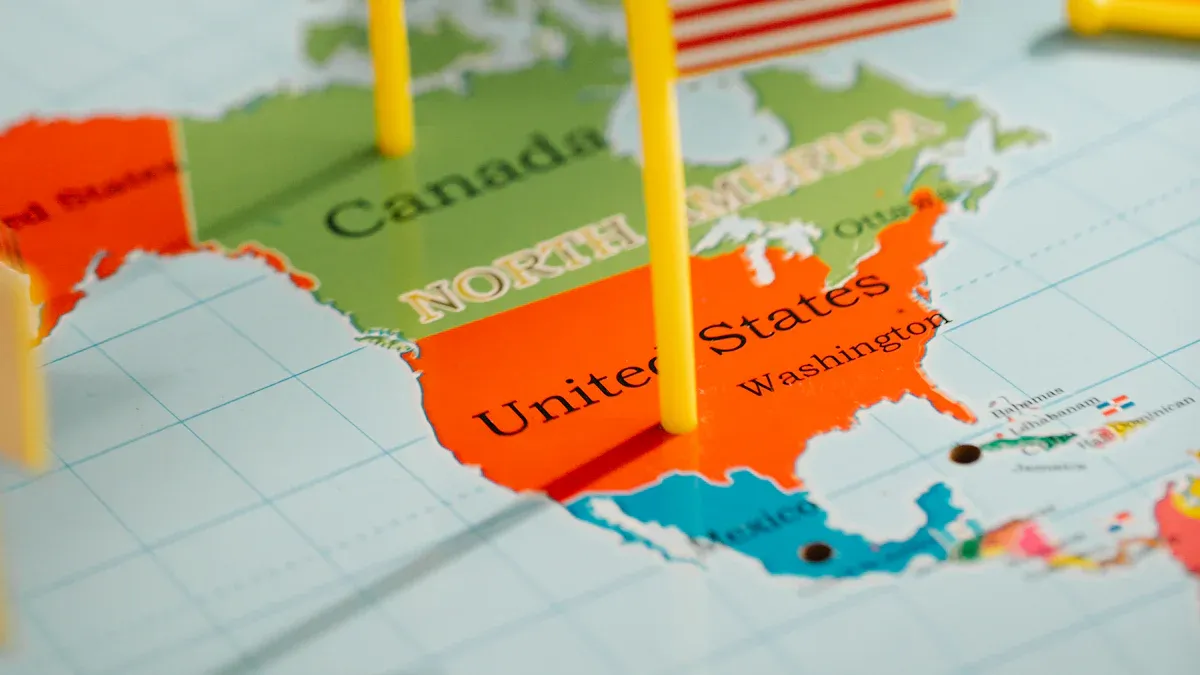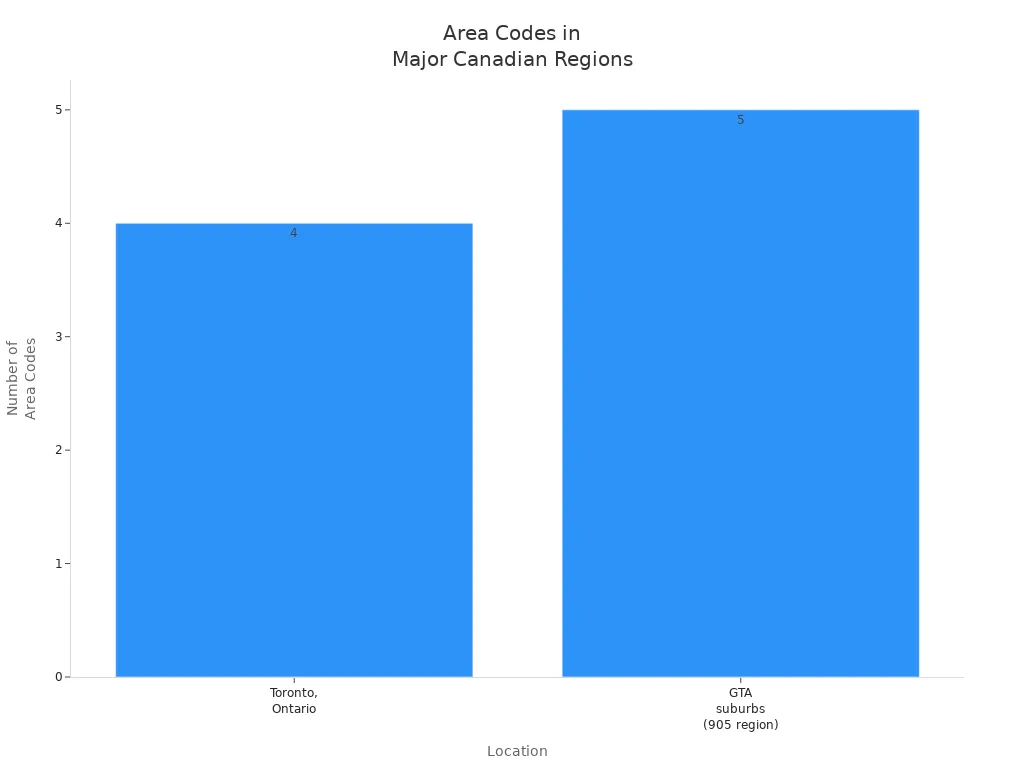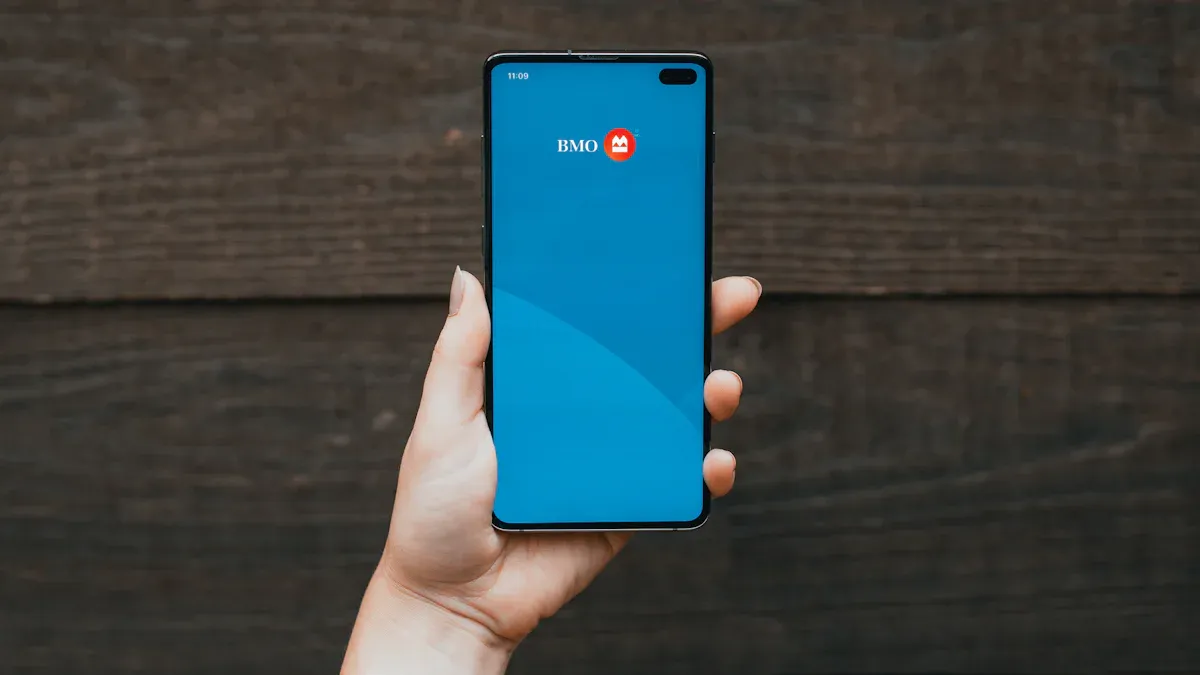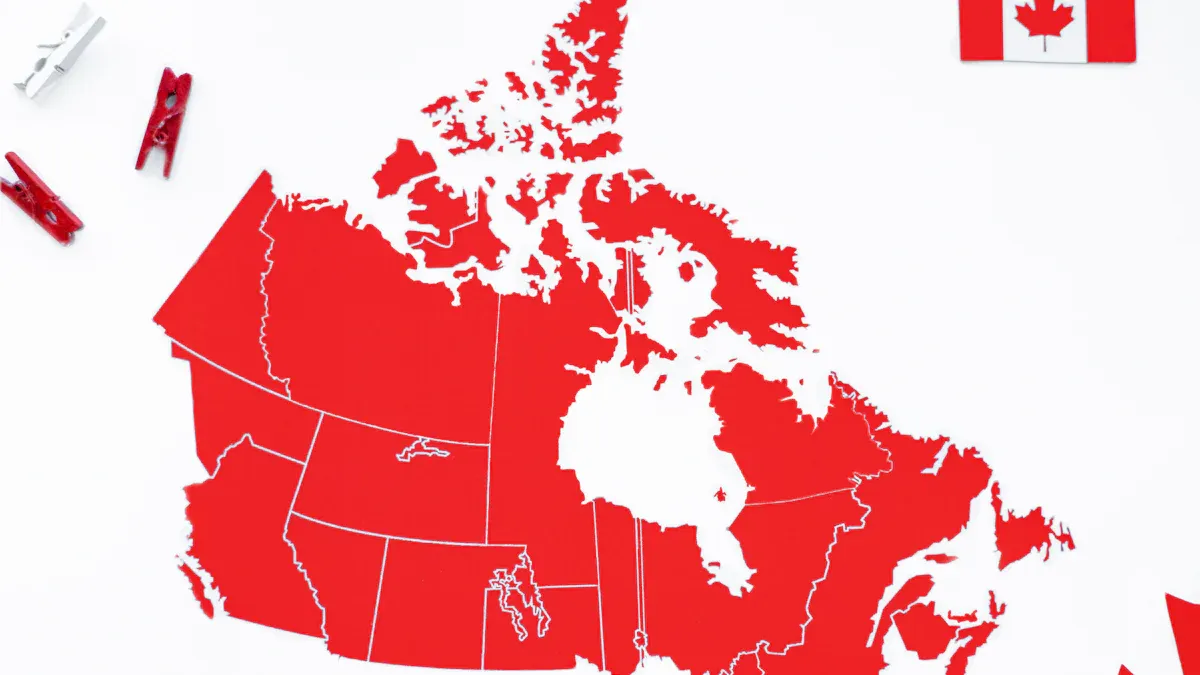- EasyCard
- Trade
- Help
- Announcement
- Academy
- SWIFT Code
- Iban Number
- Referral
- Customer Service
- Blog
- Creator
Canada Phone Number Format and Calling Code Essentials

Image Source: pexels
You use the Canada country code +1 when dialing a Canada phone number. The standard format for a Canada phone number looks like this: +1 416 123 4567. Canada belongs to the North American Numbering Plan, which includes 20 countries that all share the +1 calling code Canada. You need to know the correct calling code for Canada and proper formatting to reach the right person. When you dial a Canada phone number, using the right calling code Canada helps your call connect without issues.
Key Takeaways
- Canada uses the country code +1, shared with the US and other NANP countries, making calls between them simple and local-like.
- A Canadian phone number always has 10 digits after +1: a 3-digit area code and a 7-digit local number, with area codes starting between 2 and 9.
- Many Canadian regions have multiple area codes, called overlays, requiring you to dial all 10 digits even for local calls.
- To call Canada from abroad, start with your country’s international prefix, then dial +1, the area code, and the local number; mobile phones let you use ‘+’ instead of the prefix.
- Different types of Canadian numbers include local, mobile, toll-free (starting with 800, 833, etc.), and emergency (911), each serving specific purposes and costs.
Canada Country Code and Number Structure
Canada Country Code
Canada uses the +1 country code as part of the North American Numbering Plan (NANP). You share this code with the United States and several Caribbean countries. The NANP started in the 1940s and was first used in 1951. AT&T created it to make long-distance calling easier across North America. At first, only the United States and Canada used the plan. Over time, other regions joined, but Canada has always remained a core member. The North American Numbering Plan Administration (NANPA) manages the +1 code for all members.
The +1 country code helps you call between Canada and other NANP countries without using international dialing prefixes. You can dial a Canadian phone number from the United States just like a local call. This system treats Canada, the US, and other NANP countries as one large calling area. You do not need to worry about extra codes or complicated steps.
Canada Phone Number Format
A Canadian phone number follows a simple and consistent structure. You will see this format:
The +1 is the country code. The next three digits are the area code, which shows the region or city. The last seven digits are the local number. This structure matches the format used in the United States and other NANP countries. When you dial a Canada phone number, you always start with the +1 country code.
Here is how you might see a Canadian phone number written:
- International: +1 604 555 7890
- Long-distance within Canada: 1 416 555 1234
- Local: (416) 555-1234
A valid Canadian phone number always has ten digits after the country code. The first digit of the area code must be between 2 and 9. This rule helps keep the numbering system organized and easy to use.
Compared to other countries, the Canadian phone number format is very simple. Many countries have different country codes and phone number lengths. In Canada, you use the same format every time, which makes dialing and saving contacts much easier.
Area Codes in Canada
Canada has more than 40 area codes. Each area code covers a specific province, city, or region. Over the past decade, the number of area codes has grown. This growth happened because more people need phone numbers for mobile phones, businesses, and homes. When one area code runs out of numbers, a new one is added. Sometimes, new area codes overlap with old ones. This is called an overlay.
You can see the main area codes for each province and city in the table below:
| Province | Main Cities | Area Codes |
|---|---|---|
| Alberta | Calgary, Edmonton | 403, 587, 780, 825 |
| British Columbia | Vancouver, Victoria | 604, 778, 236, 250 |
| Ontario | Toronto, Ottawa, Hamilton | 416, 647, 905, 613 |
| Quebec | Montreal, Quebec City | 514, 418, 450, 819 |
| Nova Scotia | Entire province | 902 |
Some cities have many area codes because of high demand. Toronto, for example, uses 416, 647, 437, and 942. The Greater Toronto Area suburbs use 905, 289, 365, 742, and a reserved code, 537. Overlays help avoid changing existing numbers and allow everyone to keep their current phone numbers.

Overlays are common in big cities like Toronto. They let you keep your number even when new area codes are added. You must dial all ten digits, including the area code, for every call. This rule helps make sure your call reaches the right person.
You will find that a Canadian phone number always follows the same pattern, no matter where you are in Canada. This system makes it easy to recognize a valid Canadian phone number and helps you avoid mistakes when dialing.
Calling Code Canada: How to Call to Canada

Image Source: unsplash
How to Call to Canada from Abroad
You can reach Canadian phone numbers from almost any country. The process starts with the international call prefix for your country. After that, you enter the calling code Canada, which is +1. Then, you dial the 3-digit area code and the 7-digit local number. This method works for both landlines and mobile phones.
Step-by-step guide for how to call to Canada from abroad:
- Find the international call prefix for your country. This code lets your call leave your country’s phone network.
- Dial the calling code Canada: +1.
- Enter the 3-digit Canadian area code.
- Dial the 7-digit local number.
Tip: On most mobile phones, you can use the “+” symbol instead of the international call prefix. Your phone will convert it to the correct code for your country.
Here is a table showing the international call prefix for some major countries:
| Country/Region | International Call Prefix | Example to Call Canada |
|---|---|---|
| United States and Canada | 011 | 011 1 416 555 1234 |
| Most European countries | 00 | 00 1 604 555 7890 |
| Australia | 0011 | 0011 1 514 555 9876 |
| Kenya, Singapore, Tanzania, Uganda | 000 | 000 1 403 555 6543 |
You must use the correct international call prefix. If you skip this step, your call may not connect. Using the “+” symbol on your mobile phone helps avoid mistakes and increases the success rate of international calls.
Many people look for cheap international calls to Canada. Providers like KeepCalling offer rates as low as $0.009 per minute. VoIP services and calling cards also help you save money. These options use the latest telecom technologies to give you clear connections and reliable service.
How to Call to Canada from the US
Calling Canada from the United States is simple. Both countries use the North American Numbering Plan. You do not need to use an international call prefix. You dial Canadian numbers just like a long-distance call within the US.
Steps for dialing Canadian phone numbers from the US:
- Dial 1 (the country code for Canada).
- Enter the 3-digit Canadian area code.
- Dial the 7-digit local number.
For example, to call Toronto, you would dial:
1 416 555 1234
Note: Most US phone plans treat calls to Canada as domestic. You often do not pay extra international fees. Some carriers, like Verizon and AT&T, offer unlimited calling to Canada for a small monthly fee. Always check your plan to avoid surprises.
If you use a landline, the process is the same. This makes calling Canada from a landline easy and familiar. Some carriers may charge extra for international calling, so review your plan details.
You can also use mobile apps or VoIP services for cheap calling rates to Canada. Apps like WhatsApp, Skype, and FaceTime let you make free or low-cost calls using the internet. These services often provide better rates and clear call quality.
International Dialing Prefixes
The international call prefix is the code you dial before the country code when making international calls. Each country has its own prefix. Using the correct international call prefix is important for dialing Canadian phone numbers successfully.
Here is a quick reference table:
| Country/Region | International Dialing Prefix | Notes |
|---|---|---|
| United States and Canada | 011 | Part of the North American Numbering Plan (NANP) |
| Most European countries | 00 | ITU recommended prefix |
| Australia | 0011 | Includes Australian External Territories |
| Kenya, Singapore, Tanzania, Uganda | 000 | Unique prefixes used in these countries |
| Other NANP countries | 011 | Includes many Caribbean and US territories |
Using the correct international call prefix ensures your call reaches Canada. If you use a mobile phone, the “+” symbol acts as a shortcut. Your phone will handle the conversion for you.
International calling relies on accurate dialing. If you miss the international call prefix or enter the wrong code, your call may fail or go to the wrong place. The “+” symbol on mobile phones helps reduce errors and improves the success rate of international calls to Canada.
Telecom providers use advanced routing systems to make sure your calls connect smoothly. For example, US telecom companies use real-time data to route and bill calls to Canada correctly. This system helps prevent billing mistakes and ensures your call quality stays high.
You can compare providers to find the best option for your needs. Here is a table with some popular choices for international calling:
| Provider | Call Origin | Call Destination | Call Rate Details | Connection Quality Description | Technology Used |
|---|---|---|---|---|---|
| JustCall | USA | Canada | Competitive low-cost plans; pricing varies by plan (e.g., Team $29/user/month) | Crystal-clear call quality with no drops across borders | Advanced VoIP technology |
| KeepCalling | Various | Canada | 0.9¢/min (example rate) | 100% quality guarantee with latest telecom tech | Telecom technologies |
You can choose from many options for cheap international calls to Canada. VoIP and calling card services help you save money and get reliable connections. Always check the rates and features before you call.
Canada Phone Number Area Codes

Image Source: pexels
Major Area Codes by Province
You can find many area codes across Canada. Each province and territory has its own set of codes. These codes help you identify where a canadian phone number comes from. The table below shows the main area codes and the cities or regions they serve:
| Province | Major Area Codes | Geographic Notes / Cities |
|---|---|---|
| Alberta | 403, 587, 825, 368, 780 | Calgary, Edmonton, Lethbridge, Medicine Hat, St Albert |
| British Columbia | 250, 604, 778, 236, 672, 257 | Vancouver, Burnaby, Victoria, Kelowna, Nanaimo, Surrey |
| Ontario | 416, 647, 905, 226, 249, 705, 807, 437, 519, 613, 365, 343, 289, 438 | Toronto, Ottawa, Hamilton, and other cities |
| Quebec | 418, 438, 450, 514, 579, 581, 819, 873 | Montreal, Quebec City, and other regions |
| Nova Scotia | 782, 902 | Entire province |
| Saskatchewan | 306, 639 | Entire province |
| Manitoba | 204, 431 | Entire province |
| Newfoundland & Labrador | 709 | Entire province |
| Prince Edward Island | 902 | Entire province |
| Northwest Territories | 867 | Entire territory |
You will notice that some provinces, like Ontario and British Columbia, have many area codes. This happens because more people need a canadian phone number for mobile phones, businesses, and homes.
Overlay Area Codes
An overlay area code means that two or more area codes serve the same region. You do not need to change your existing canadian phone number when a new overlay is added. Overlays help avoid running out of numbers in busy areas. For example, Saskatchewan uses 306, 639, and 474 as overlays. Newfoundland & Labrador now has both 709 and 879. Most large cities, such as Toronto and Vancouver, use overlays to meet demand.
Overlays require you to dial all ten digits of a canadian phone number, even for local calls. This rule prevents confusion and ensures your call reaches the right person.
Some regions, like the Northwest Territories (867) and northwest Ontario (807), do not have overlays yet. In these places, you may still use seven-digit dialing for some calls.
Finding the Right Area Code
You can find the correct area code for a canadian phone number by using online lookup tools. These tools update often because new area codes appear as populations grow. Services like Ringflow let you search by city or number. You can also see interactive maps that show area code boundaries. The North American Numbering Plan Administration manages these codes and keeps them current.
Always check the area code before dialing a canada phone number. This step helps you avoid wrong numbers and makes sure your call connects.
If you want the most accurate information, use official telecom websites or trusted lookup services. These resources help you keep up with changes in canadian phone number area codes.
Common Issues with Calling Code for Canada
Incorrect Number Format
You might run into problems if you do not use the correct format when dialing a Canadian phone number. Many people make simple mistakes that stop calls from connecting. Here are some of the most common errors:
- You forget to add the country code (+1) before the area code.
- You use the wrong area code or leave out digits.
- You include a trunk prefix (like a leading zero) that should not be there.
- You call at the wrong time because you ignore time zones.
- You try to reach a number that is no longer active.
- You dial numbers with spaces, dashes, or parentheses, which can confuse some phone systems.
- You do not follow the correct order: exit code, country code, area code, then local number.
Tip: Always check that you use the full international format. For example, dial +1 416 555 1234, not just 416 555 1234.
Canadian telecom providers help you avoid these mistakes. They use the E.164 international format and automated tools to check numbers. Many companies also train staff and use validation tools to keep contact lists accurate.
International Dialing Problems
International calls to Canada sometimes fail for technical reasons. You can fix many issues by following these steps:
- Check your internet or phone connection. Try switching between WiFi and mobile data.
- Make sure your calling app is up to date.
- Double-check that you entered the number in the correct format.
- Confirm you have enough credit or balance to make the call.
- Listen for error messages or warnings during the call.
- If you hear silence, wait about 10 seconds before hanging up.
- If nothing works, contact your provider’s support team with details about your call attempt.
Note: Removing trunk prefixes, like a leading zero, is important when dialing internationally. This helps your call reach the right number.
Blocked or Restricted Numbers
You may find that some Canadian numbers are blocked or restricted for international callers. The Canadian Radio-television and Telecommunications Commission (CRTC) sets rules to protect consumers. These rules limit telemarketing and block calls with fake or malformed caller ID information. If you try to call a number on the National Do Not Call List or use a caller ID that does not match valid formats, your call might not go through. The CRTC also requires phone companies to use caller ID authentication to stop unwanted or spoofed calls. These measures help keep Canadian phone users safe from scams and unwanted calls.
Types of Canada Phone Numbers
Canada uses several types of phone numbers, each with its own features and purpose. You will find that understanding these types helps you choose the right number for your needs.
Local Numbers
Local numbers connect you to people or businesses in a specific area. When you dial a local number, you use a standard area code, such as 416 for Toronto or 604 for Vancouver. You pay for the call, and the number ties to a geographic region. For example, if you call (416) 555-1234, you reach someone in Toronto. Local numbers make it easy to identify where a call comes from.
Tip: Always check the area code to know if a canada phone number is local to your region.
Mobile Numbers
Mobile numbers in Canada look just like local numbers. You cannot tell if a number is for a cell phone or a landline just by looking at it. Both use the same area codes and follow the same format. For example, (604) 555-7890 could be a mobile or a landline. You need to ask the person or check with your provider to know for sure. Mobile numbers give you the freedom to move across the country and keep your number.
Toll-Free Numbers
Toll-free numbers start with special prefixes, such as 800, 833, 844, 855, 866, 877, or 888. When you call a toll-free number, you do not pay for the call. The business or service owner pays the cost. These numbers work across all regions and time zones in Canada. For example, 1-800-555-1234 connects you to a company’s customer service. Toll-free numbers often include features like custom greetings or call forwarding.
Note: Toll-free numbers help businesses serve customers from anywhere in Canada without extra charges to the caller.
Emergency Numbers
Emergency numbers give you quick access to help in urgent situations. The most important emergency number in Canada is 911. You can call 911 for police, fire, or medical emergencies. This number works everywhere in the country. You do not need an area code or prefix. When you dial 911, you reach trained operators who send help right away.
Here is a table that shows the main features of each type:
| Phone Number Type | Distinguishing Features | Cost to Caller | Geographic Limitation | Number Format / Prefixes | Additional Features |
|---|---|---|---|---|---|
| Local Numbers | Assigned to specific geographic areas | Caller pays for the call | Yes, tied to geographic area | Standard area codes (e.g., 416, 604) | N/A |
| Toll-Free Numbers | Start with specific codes such as 800, 888, 833, 844, 855, 866, 877, 888, 310 | Free for caller; cost borne by owner/subscriber | No geographic or time zone limitation | Prefixes like 800, 833, 844, 855, 866, 877, 888, 310 | Custom greetings, call redirecting, vanity numbers, working hours, music on hold |
| Mobile Numbers | Same format as local numbers | Caller pays for the call | No geographic limitation | Standard area codes | Number portability |
| Emergency Numbers | Used for urgent help (911) | Free | No limitation | 911 | Directs to police, fire, or ambulance |
Canada’s system for allocating different types of numbers matches the approach used in other North American Numbering Plan countries. You will see overlays, number pooling, and 10-digit dialing, which help manage the growing demand for canadian phone number resources.
Understanding the Canada phone number format and calling code helps you avoid common mistakes. To dial correctly, follow these steps:
- Start with your country’s international access code.
- Enter Canada’s country code (+1).
- Add the three-digit area code.
- Dial the seven-digit local number.
- Use the ‘+’ symbol on mobile phones when possible.
Always double-check the area code and number before calling. Using the right codes ensures your call connects without issues.
FAQ
What is the correct way to write a Canada phone number for international calls?
You should write a Canada phone number as +1, followed by the 3-digit area code and the 7-digit local number. For example: +1 416 555 1234.
Do I need to dial the country code when calling Canada from the United States?
You do not need to use an international prefix. Just dial 1, then the area code and local number. For example: 1 604 555 7890.
How can I tell if a Canada phone number is a mobile or landline?
You cannot tell by looking at the number. Both mobile and landline numbers use the same area codes and format. You may need to ask the person or check with your provider.
What are Canada’s toll-free number prefixes?
Canada’s toll-free numbers start with 800, 833, 844, 855, 866, 877, or 888. You do not pay for these calls. The business or service owner pays the cost.
Why does my call to a Canada number not connect?
Check that you used the correct country code, area code, and number format. Make sure your phone plan allows international calls. If you still have problems, contact your provider for help.
Understanding Canada’s phone number format (+1, area code, 7-digit number) ensures seamless international calls, vital for travelers and expats connecting with Canada. Complement your communication with efficient global payments using BiyaPay. Unlike traditional banks charging $20-$40 for international transfers, BiyaPay offers transfer fees as low as 0.5%, with real-time exchange rate transparency across 30+ fiat currencies and 200+ cryptocurrencies in 100+ countries. The Biya EasyCard, a virtual card with no annual fee, supports secure payments on Amazon, eBay, and PayPal in 190+ countries, perfect for travel expenses or online purchases. Whether sending funds to Canadian contacts or managing cross-border transactions, BiyaPay ensures same-day transfers and simple setup with ID verification. Licensed in the U.S. and New Zealand, it guarantees secure, compliant transactions. Pair BiyaPay with affordable VoIP services like KeepCalling (0.9¢/min to Canada) for cost-effective communication and payments. Join BiyaPay today to streamline your global financial connections in 2025!
*This article is provided for general information purposes and does not constitute legal, tax or other professional advice from BiyaPay or its subsidiaries and its affiliates, and it is not intended as a substitute for obtaining advice from a financial advisor or any other professional.
We make no representations, warranties or warranties, express or implied, as to the accuracy, completeness or timeliness of the contents of this publication.




Contact Us
Company and Team
BiyaPay Products
Customer Services
is a broker-dealer registered with the U.S. Securities and Exchange Commission (SEC) (No.: 802-127417), member of the Financial Industry Regulatory Authority (FINRA) (CRD: 325027), member of the Securities Investor Protection Corporation (SIPC), and regulated by FINRA and SEC.
registered with the US Financial Crimes Enforcement Network (FinCEN), as a Money Services Business (MSB), registration number: 31000218637349, and regulated by FinCEN.
registered as Financial Service Provider (FSP number: FSP1007221) in New Zealand, and is a member of the Financial Dispute Resolution Scheme, a New Zealand independent dispute resolution service provider.



















